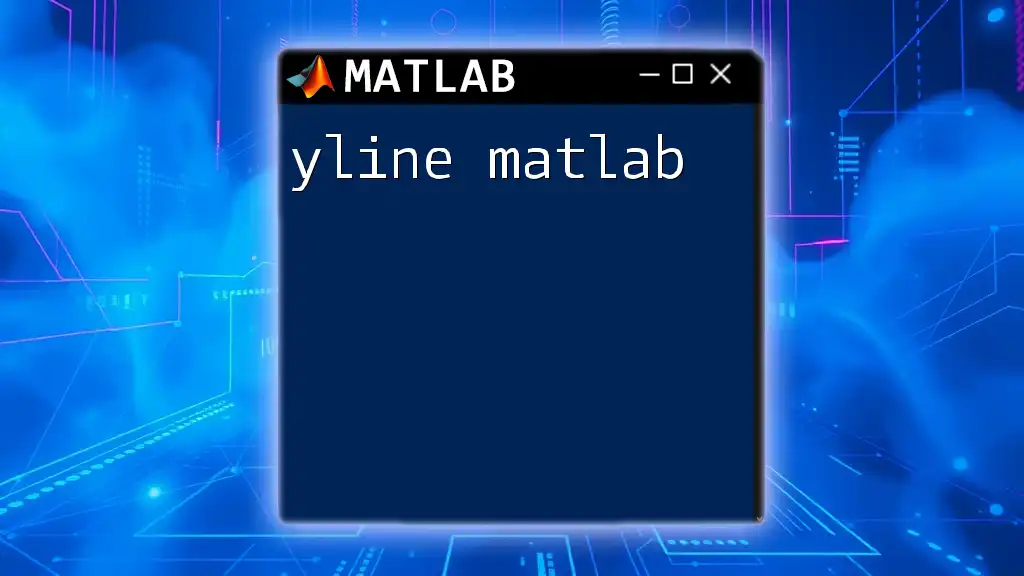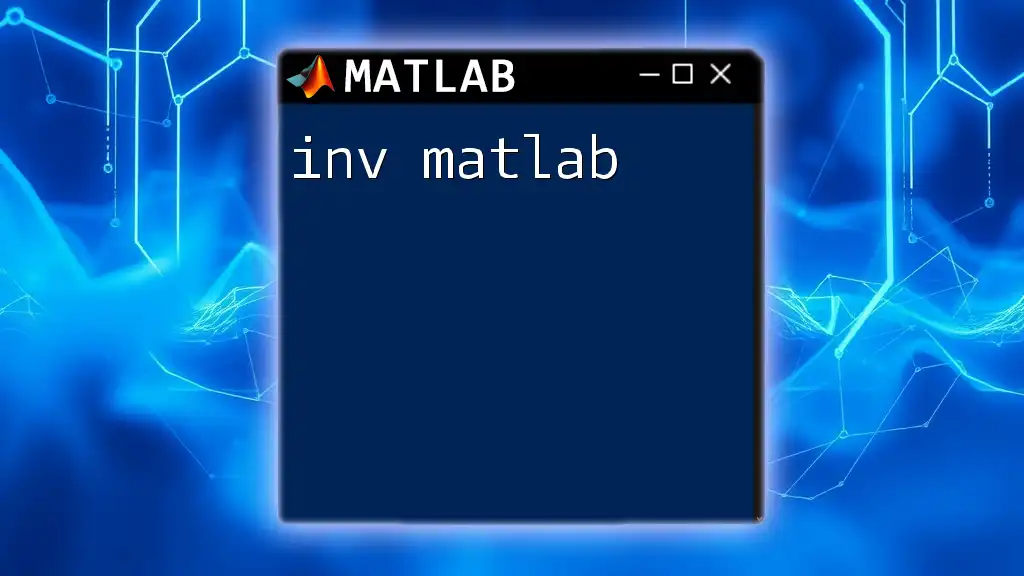The `inv` function in MATLAB computes the inverse of a square matrix, allowing users to solve systems of equations or analyze data in various applications.
A = [1, 2; 3, 4]; % Define a 2x2 matrix
A_inv = inv(A); % Calculate the inverse of the matrix A
Understanding Matrix Inversion
What is a Matrix?
A matrix is a rectangular array of numbers arranged in rows and columns. Matrices are fundamental in various scientific fields, including computer graphics, machine learning, and systems of linear equations. There are different types of matrices, such as:
- Square Matrices: Matrices with the same number of rows and columns (e.g., 2x2, 3x3).
- Rectangular Matrices: Matrices with different numbers of rows and columns.
Importance of Matrix Inversion
Matrix inversion is a crucial operation in linear algebra, primarily used in solving linear equations. In practical applications, many problems can be reduced to matrix equations. For example, to find the values of variables in a system of equations, you often express it in the matrix form:
\[ Ax = b \]
Where:
- \( A \) is the matrix of coefficients,
- \( x \) is the vector of unknowns,
- \( b \) is the resultant vector.
Finding the inverse of matrix \( A \) allows you to compute \( x \) using:
\[ x = A^{-1}b \]
This application spans various fields, including engineering, physics, and computer science.

The `inv` Function in MATLAB
Syntax of `inv`
The main syntax for using the `inv` function in MATLAB is:
B = inv(A)
Here, `A` is the input matrix for which you want to find the inverse, and `B` is the resulting inverted matrix.
Requirements for Using `inv`
To use the `inv` function, the matrix must be invertible, which means it needs to be non-singular. A square matrix is singular if its determinant is zero. The identity matrix plays a significant role in matrix inversion, as the product of a matrix and its inverse yields the identity matrix:
\[ A \cdot A^{-1} = I \]

How to Use `inv` in Practice
Basic Example
To illustrate the use of the `inv` function, consider the following simple example with a 2x2 matrix:
A = [1, 2; 3, 4];
B = inv(A);
In this case, the output matrix \( B \) would be:
B = [-2, 1; 1.5, -0.5];
Working with Larger Matrices
Now let’s consider a more complex example involving a 3x3 matrix:
A = [1, 0, 2; 0, 1, 3; 4, 0, 1];
B = inv(A);
Upon executing the code, you will receive the inverse of matrix A. It's essential to highlight that as the size of the matrix increases, both computational complexity and processing time may also increase significantly.
Error Handling
One common issue when using `inv` is attempting to invert a singular matrix, which will cause an error. For example, consider the following singular matrix:
C = [1, 2; 2, 4]; % Singular matrix example
To prevent errors, you can verify if a matrix is singular by checking its determinant before trying to invert it:
if det(A) == 0
disp('Matrix is singular; cannot be inverted.');
else
B = inv(A);
end

Alternatives to `inv`
Using the Backslash Operator
In most cases, using the backslash operator (`\`) is preferred over `inv`. It offers a solution to linear equations without explicitly computing the inverse, making it more numerically stable and computationally efficient.
Here’s how you can solve a linear system using the backslash operator:
A = [3, 2; 1, 5];
b = [5; 7];
x = A \ b; % More efficient
This method directly computes the solution \( x \) without the potential pitfalls of explicitly finding the matrix inverse.

Practical Applications of `inv`
Solving Linear Systems
The `inv` function can be effectively used to solve systems of linear equations. For instance, given the following system:
A = [1, 2; 3, 4];
b = [5; 11];
x = inv(A) * b;
This code snippet will yield the values of \( x \) once the operation is completed. However, remember that solving systems this way is generally less efficient than using the backslash operator.
Data Analysis and Applications
Matrix inversion plays a significant role in fields such as data analysis, simulations, and model predictions. In machine learning algorithms, converting data to matrices and performing operations like inversion is crucial for model training and implementation.

Best Practices for Using `inv`
When to Use `inv`
Use the `inv` function when you need the inverse of a matrix for theoretical calculations and when it’s confirmed that the matrix is non-singular. In most practical scenarios, however, prefer alternative methods.
Performance Considerations
It’s vital to understand that calculating the inverse of a matrix is computationally expensive. For large matrices, this could lead to performance issues and numerical instability. Therefore, evaluate the need for the inverse before proceeding.

Conclusion
The `inv` function in MATLAB provides a straightforward approach for matrix inversion. Understanding its application and limitations is essential for efficient coding and problem-solving in computational tasks. By following the best practices shared in this guide, you can enhance your MATLAB programming skills, ensuring optimal matrix operations.

Additional Resources
For more in-depth exploration, consider checking out the MATLAB documentation for the `inv` function, along with various tutorials or courses that delve deeper into MATLAB functionalities.

FAQs
Commonly Asked Questions
- Why can’t all matrices be inverted? A matrix can only be inverted if it is non-singular, meaning its determinant is not zero.
- What alternatives to `inv` exist in MATLAB? The backslash operator is a widely preferred alternative for solving linear equations.
- How can I visualize the inverse of a matrix? You can plot the original and inverted matrix using heatmaps or other graphical representations in MATLAB.
With this comprehensive guide, you've gained a robust understanding of the `inv` function in MATLAB, covering its essential aspects, practical applications, and alternatives.

















